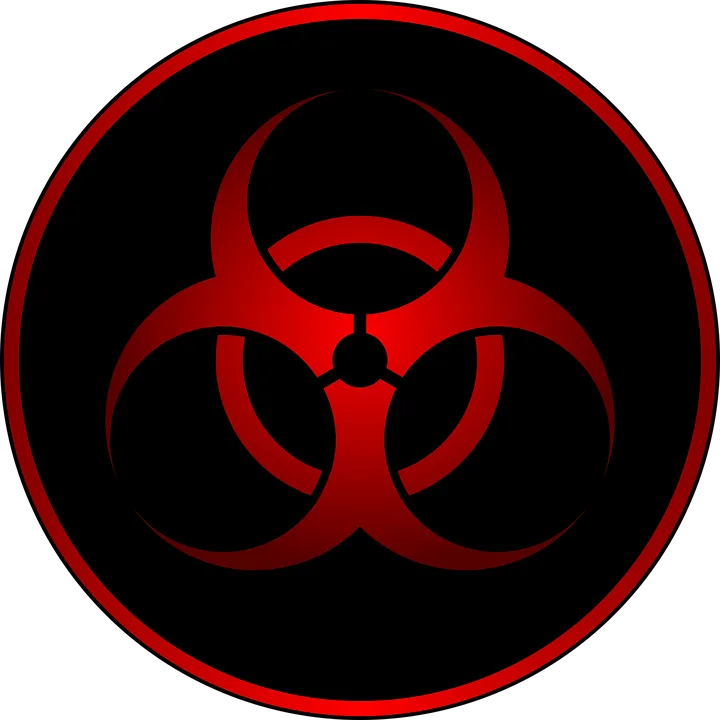Many people are concerned about possible health issues, which might be connected to the agricultural use of glyphosate. Let's find out, if it's as dramatic as it seems.
Glyphosate, Roundup, Touchdown – what’s all the fuzz about?
If you are aware of the ongoing battles between NGO activists, scientists and companies like Monsanto or Syngenta, then you should have noticed a lot of the noise is related to something called “glyphosate” (1).
It’s one of the most used broad-spectrum herbicides in agriculture. In combination with a mixture of other chemicals (Roundup or Touchdown as end-products) it’s highly effective in getting rid of unwished weeds and therefore increasing the profits of (industrial) farming.
But during the last years, a lot of voices emerged, which raised concerns about potential dangers to the health of humans, other animals and impact on plant resistances. My main focus with this article will be related to human health, though.

Source
One of the supposedly most credible sources for the concerns about human health is the WHO. And in most cases, this might be true, but one has to be a bit more sceptical, when it comes to Glyphosate.
A sub-organisation of the WHO is the IARC (International Agency for Research on Cancer), which is responsible for the classification of carcinogenic dangers of almost everything a human can come across during his life. Be aware, that I explicitly wrote about “dangers” and not risks – that’s an important distinction to make. The classification (2) is as follows:
| Group | Danger |
|---|---|
| 1 | Carcinogenic to humans |
| 2A | Probably carcinogenic to humans |
| 2B | Possibly carcinogenic to humans |
| 3 | Not classifiable as to its carcinogenicity to humans |
| 4 | Probably not carcinogenic to humans |
We all know, alcohol is not something healthy to consume and associated with a lot of different risks. But it’s just not as likely to cause cancer as unprotected work with Plutonium is. So, the mere classification as carcinogenic to humans, doesn’t necessarily equals a high risk for actually contracting cancer.
Another problem connected to the IARC is the way, it is working. It doesn’t conduct its own research, but only literature studies. This can lead to the weird situation, that professionals working with the IARC are responsible to rate their own work and the, possibly objecting, work of their colleagues. Check out this amazing article (4) by Kate Kelland to get some more information.
Scientific approach
That being said, let’s take a closer look at some of the available research regarding glyphosate and correlated health concerns.
For obvious reasons, the research, whether glyphosate causes threats to human health or not, is a bit more difficult. Just putting some people into a lab and dose them with an herbicide, would considered at least highly unethical by most scientists around the globe – as well as governments. So, you have to use other means. In 2017, Bailey et al. (5) provided some insights about the impact of glyphosate on Caenorhabditis elegans (6), a roundworm. According to their research, there might be a risk, that
Due to the wide-spread agricultural and occupational use of glyphosate-containing herbicides, chronic exposure to a mitochondrial inhibitor could render a person more susceptible to neurodegeneration
Similar results were already stated by Negga et al. in 2011 (7), so it may appear, that the risk neuronal diseases, is increasing with the use of glyphosate.
But keep in mind, that they are speaking of “chronic exposure”. Therefore, this might not apply to most humans.
So, let’s go further. In a paper published by EPA (2016) (8) about the available research on carcinogenic effects of glyphosate, they stated quite clearly, that
there is not strong support for the “suggestive evidence of carcinogenic potential” cancer classification descriptor based on the weight-of-evidence, which includes the fact that even small, non-statistically significant changes observed in animal carcinogenicity and epidemiological studies were contradicted by studies of equal or higher quality. The strongest support is for “not likely to be carcinogenic to humans” at the doses relevant to human health risk assessment for glyphosate.
Although, some animal studies have indicated an increased risk of neurodegeneration (which is still unsure in regard of human biology), the available evidence on humans do not support the wide-spread idea of glyphosate being carcinogenic. It appears, it is much less dangerous, than certain NGOs want us to believe. In November 2017, the Agricultural Health Study (9) was released and it provided some valuable insights. Using data from more than 90,000 farmworkers, the authors came to the following conclusion:
In this updated evaluation of glyphosate use and cancer risk in a large prospective study of pesticide applicators, we observed no associations between glyphosate use and overall cancer risk or with total lymphohematopoietic cancers, including NHL and multiple myeloma. However, there was some evidence of an increased risk of AML for applicators, particularly in the highest category of glyphosate exposure compared with never users of glyphosate.

Source
Final thoughts
This seems a bit more sophisticated in comparison to what you may have heard from media sources. When I started my research on this article, I was not so sure, what I was going to find. I’ve read a lot of opinions, that either the use of glyphosate was associated with a high risk of cancer or not at all. Frankly, I would say, it’s neither of these extremes. As far as I can tell, there is a possible increased risk of contracting acute myeloid leukaemia (AML), but it is still relatively low.
It appears, that more research is needed. Although the impact of glyphosate on human health might not be as big as some people might tell you, this does not necessarily count for the other chemical ingredients used in products like Roundhouse or Touchdown. There is some evidence, that not glyphosate itself, but the other chemical compounds are more problematic (Janssens et al., 2017) (10).
Therefore, it might be a good idea, to be cautious about the use of herbicide but not fatalistic. As long as we need them to grow crops at an industrial scale, we should focus our efforts towards developing more efficient and less dangerous herbicides, instead of trying to ban the ones we already use. There will always be some kind of risk, associated with everything we do. But in most cases, it’s far less risky than the scaremongers are claiming. So, stay calm, look at the available data and be less fearful in the end.
This might be better for your health anyway.
Feel always free to discuss my ideas and share your own thoughts about the things I’m writing about. Nobody is omniscient and if we all walk away a bit smarter than before, we’ll have achieved a lot.
Thanks for reading.
Ego

Make sure, to check out #steemstem for more science related content.
References
(1) https://en.wikipedia.org/wiki/Glyphosate
(2) http://monographs.iarc.fr/ENG/Classification/
(3) http://monographs.iarc.fr/ENG/Classification/List_of_Classifications.pdf
(4) https://www.reuters.com/investigates/special-report/health-who-iarc/
(5) Bailey, Denise C.; Todt, Callie E.; Burchfield, Shelbie L.; Pressley, Aireal S.; Denney, Rachel D.; Snapp, Isaac B.; Negga, Rekek; Traynor, Wendy L.; Fitsanakis, Vanessa A.; Chronic exposure to a glyphosate-containing pesticide leads to mitochondrial dysfunction and increased reactive oxygen species production in Caenorhabditis elegans; Environmental Toxicology and Pharmacology; Volume 57; January 2018; Pages 46-52; doi: https://doi.org/10.1016/j.etap.2017.11.005
(6) https://en.wikipedia.org/wiki/Caenorhabditis_elegans
(7) Negga, R.; Stuart, J. A.; Machen, M. L.; Salva, J.; Lizek, A. J.; Richardson, S. J.; Osborne, A. S.; Mirallas, O.; McVey, K. A.; Fitsanakis, V. A.; Exposure to glyphosate- and/or Mn/Zn-ethylene-bis-dithiocarbamate-containing pesticides leads to degeneration of γ-aminobutyric acid and dopamine neurons in Caenorhabditis elegans; Neurotox Res. 2012 Apr; 21(3); 281-90. doi: 10.1007/s12640-011-9274-7.
(8) https://www.epa.gov/sites/production/files/2016-09/documents/glyphosate_issue_paper_evaluation_of_carcincogenic_potential.pdf
(9) https://academic.oup.com/jnci/advance-article/doi/10.1093/jnci/djx233/4590280
(10) Janssens, Lizanne; Stoks, Robby; Stronger effects of Roundup than its active ingredient glyphosate in damselfly larvae; Aquatic Toxicology; Volume 193; December 2017; Pages 210-216; doi: https://doi.org/10.1016/j.aquatox.2017.10.028